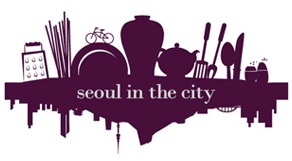You can achieve quality taste without msg in royal cuisine.
You may think that the quote above is pretty random or weird. The sad truth is, is that so many Korean restaurants (I will boldly say majority) in Korea, use a lot of msg. When I first moved here a few years ago, I struggled with indigestion for a year! Only to find that it was the Korean food that caused it. Not to say that there aren't restaurants who do it the proper way and leave msg out of the picture all together. During this course, after carefully learning how to marinate and season food without any additives, everything was quite clean and authentic! So you can achieve the quality taste at home by using natural ingredients to prepare amazing Korean dishes.
Fun bragging rights about my teacher...
President 한복려 Han Bok Ryeo-gave Pierre Gagnaire a few lessons on what Korean cuisine was all about when he was in Seoul. She was also featured in the 'Kimchi Chronicles', and appeared in multiple televison programs over the past few decades. She also played a major role in planning the menu/food styling/set design in the famous Korean drama series 'Dajangeum'. Han was also one of the few chefs that was invited to North Korea to cook for their private government parties, and met that past dictators. Wow.
Going back to the food...
One interesting fact that I learned was that the original 육개장 'yukgaejang' (spicy Korean soup made with beef broth) was made with 곱창 'gobchang' or cow intestine. Okay so I'm definitely not a huge fan of cow intestine. But I'm the biggest fan of yukgaejang. Even though I had to clean the intestines to prepare this dish in class, this is not going to be part of my yukgaejang soup at home, haha. Uh, I think I'll just stick to beef.
Food styling...
Have you noticed that most of the dishes in my photos contained a minimum of 5 colors?
오방색 'obangsaek'=5 colors in Korean. This is key when it comes to Korean cuisine in general, which you can see this history dated back from when Korean royal cuisine began. You may see the efforts in most Korean dishes to create these 5 colors today. The colors: green, red, black, yellow, and white. One tip I learned was that if you don't quite have ingredients in your dish to create these 5 colors, the colors of the plating could be incorporated in those 5 colors as well. For example, if a plate has a red flower print, then that could actually be the red color that needs to be represented. Good to know:)
P.S. I did not post all photos that covered my days 5-10. Just the ones that turned out edible, haha.
월과채-'walgwachae'
편수 'pyunsoo'-summer dumplings, you add this to cold broth
Steaming them with cloth in a wooden steamer.
Live octopus! It was moving around, trying to get away~
Making 육포 'yukpo'-Korean beef jerky
곳감쌈-Walnuts rolled in dried persimmon. I absolutely loved making this because it was so easy! You cut open the persimmon, flattened it out on a roller, add walnuts in the center (you can sandwich the walnuts with honey, as shown in the photo), and then roll it up like a sushi roll. You then regrigerate for an hour or less, then slice and serve! It's turns out beautifully:)
규아상-미만두-dumplings with beef, mushrooms, cucumber.
두부전골-Soup with tofu (beef in the center), beef, bean sprouts, onions, radish, carrots, mushrooms, spring onions.
Teachers making rice cakes for us...은행볶음-'Eunhang' to the right.
신선로-열구자탕 'Shinsunro'
Another great view from our classroom.
This was the spread of the spices and other dried ingredients that we can mix with water to create natural food coloring. This was to make the 밀전병 반죽 or the mini flour pancakes for the dish below.
구절판 'gujulpan' which means 9 dishes. This dish takes a lot of prep (ridiculous amount!) so most Korean households will prepare this for special guests or holidays. Notice how all the veggies have to be the same length!
Wrapping and eating the gujulpan.





















